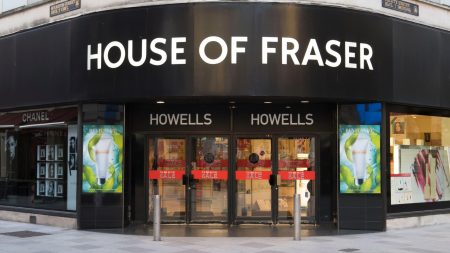The resurgence of retro fashion has transformed pre-loved clothing into a potential goldmine for those with an eye for vintage treasures. Garments from iconic brands of the 80s, 90s, and 2000s are experiencing a renewed popularity, driven by shoppers seeking unique and nostalgic pieces to elevate their personal style. This trend isn’t limited to high-end designer labels; beloved high street brands, some of which have disappeared from the retail landscape, are also in high demand. This revival presents an opportunity to declutter wardrobes while simultaneously generating income from forgotten fashion gems.
Platforms like Vinted, eBay, and Depop have become thriving marketplaces for pre-loved clothing, with certain brands and items commanding substantial prices. The Kate Moss x Topshop collection from 2007, an iconic collaboration that sparked queues down Oxford Street, remains highly sought after. Items like the fringed leather jacket and pansy dresses from the collection are fetching impressive sums, demonstrating the enduring appeal of well-designed and culturally significant fashion. Beyond Topshop, classic trainers from brands like Fila, Nike, and Adidas, particularly vintage designs, are experiencing a surge in popularity among sneaker enthusiasts and fashion-conscious individuals. The value of these trainers varies considerably depending on their condition and rarity, with some retro Nike Air Jordans achieving particularly high prices.
The appeal of retro fashion extends beyond specific collections or brands. Certain garments, such as bum bags, have seen a complete resurgence, moving from nostalgic relics to trendy accessories. Similarly, the Sweater Shop, a staple of the 80s and 90s high streets, is enjoying renewed appreciation, with its distinctive, brightly patterned knitwear becoming a coveted item for younger generations. The bold and often outlandish designs, once considered slightly garish, now embody a retro chic aesthetic, commanding prices far exceeding their original retail value. This demonstrates how fashion trends can be cyclical, with yesterday’s cast-offs becoming tomorrow’s treasures.
The enduring value of quality and iconic branding is another key factor driving the retro fashion market. Patagonia fleeces, known for their durability and distinctive designs, consistently fetch high prices, particularly vintage and colorful examples. This reinforces the idea that investment in well-made, classic pieces can pay off in the long run, both in terms of longevity and potential resale value. Similarly, classic American brands like Tommy Hilfiger are experiencing a comeback, with vintage sweatshirts and other items gaining popularity among those seeking a timeless, preppy aesthetic. The brand’s recent collections have even drawn inspiration from these retro pieces, further solidifying their relevance in contemporary fashion.
Denim remains a timeless wardrobe staple, and vintage Levi’s continues to attract a devoted following. Iconic pieces like 501 jeans and trucker jackets are highly sought after on resale platforms, with rarer examples commanding significant premiums. The brand’s own pre-loved store is a testament to the enduring demand for vintage Levi’s. Identifying specific features, like the “Big E” label or single-stitched inseams, can help determine the age and potential value of vintage Levi’s, making it worthwhile to examine any old denim treasures lurking in the back of the closet.
Navigating the online marketplace for selling pre-loved clothing requires awareness of tax implications. While selling personal items for less than their original purchase price generally has no tax implications, changes to regulations require digital platforms like Vinted, eBay, and Etsy to share seller information with tax authorities under certain circumstances. This typically applies to business sellers trading for profit, but individuals who sell a large volume of items or exceed specific earnings thresholds may also be affected. Understanding these rules is crucial for ensuring compliance and avoiding potential issues with tax authorities. Ultimately, the resurgence of retro fashion offers a unique opportunity to capitalize on nostalgic trends while giving cherished clothing items a new lease on life.











